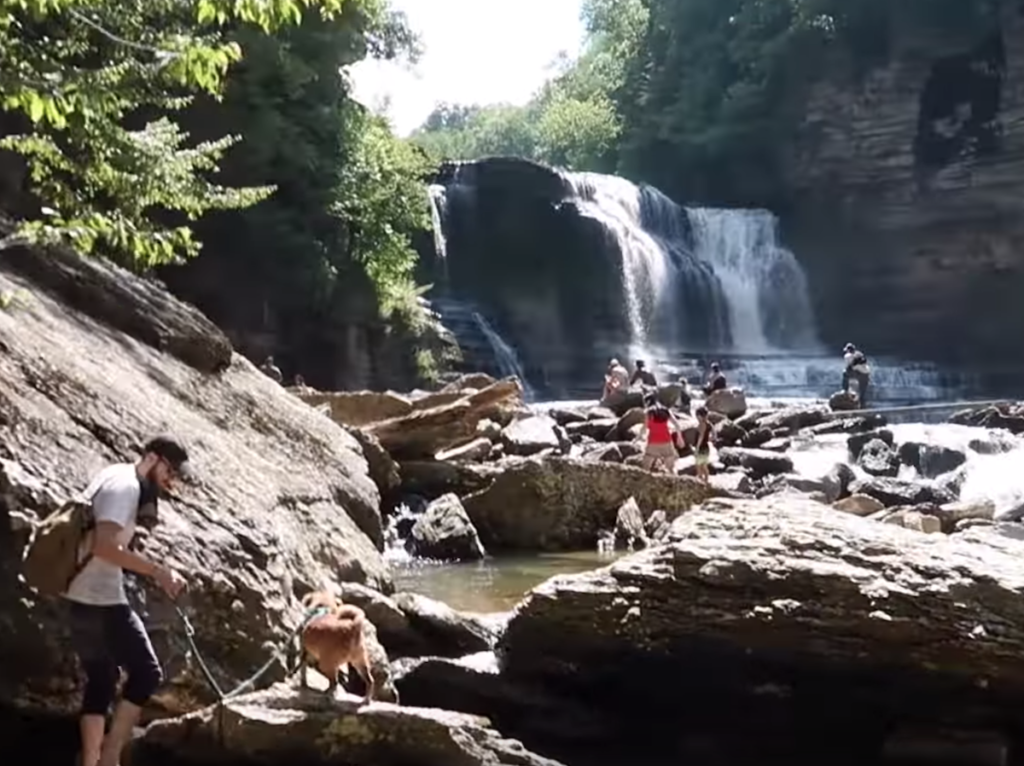
The family of a 2-year-old who died at Cummins Falls State Park this summer filed a lawsuit this week, saying the state’s negligence led to Steven Pierce’s death.
Central to the lawsuit against the state is park officials’ decision to allow visitors to Cummins Falls on June 9. It also argues the park should have had more safety measures in place, and it claims rangers gave Steven Pierce’s father directions that led to his getting swept away in floodwaters.
The Tennessee Department of Environment and Conservation, which oversees the state parks system, says it does not wish to comment on the lawsuit.
The lawsuit cites a “series of human errors,” starting with park officials’ deciding to open the waterfall to the public, despite knowing rain was in the forecast. Once visitors were there, the lawsuit says, the park provided life jackets at the base of the waterfall, but visitors had to give them back before they hiked through the gorge to the trailhead.
It was then, while hiking away from the falls, that Curtis Pierce and his son, Steven, got caught in a flash flood, says David Randolph Smith, an attorney representing the family.
“They should have had the life jackets where you shouldn’t have to return them until you got out of the area where you would potentially need one,” he says.
The family also claims that, after rangers blew whistles to warn of an incoming flood, they misdirected Curtis Pierce at first — telling him to keep going along the trail instead of finding higher ground.
“Yes, there was a flood. Sure, the flood caused this death. But it was also caused, we would argue, by the actions and inactions of the landowner, the employee, TDEC, etc.,” Smith says.
Tennessee statute allows for government agencies to be found liable for injuries on public land, “but it’s also not necessarily a slam dunk,” says Sarah Young, a professor of recreation park and tourism studies at Indiana University.
Young identified several lawsuits involving injuries at Tennessee state parks or natural areas in the past 30 years. Most haven’t resulted in damages, as it’s often hard to prove that the state is responsible for harm that happens in nature.
In one 1986 case, the family of a golfer struck by lightning argued the state should have had a warning system or safety shelters in place. The court reasoned that because lightning strikes are so rare, “it is not reasonable to require one to anticipate when and where it will strike.”
In another case from 1997, a woman had been drinking at a state natural area and fell off a bluff at night. The court decided that was her fault, not the state’s:
“Erecting warning signs, installing lighting along the trails, fencing the entire area, or installing guard rails, barriers, or other sorts of buffers, while perhaps appropriate at Dollywood, would have been entirely unwarranted and unnecessary at a natural area such as Colditz Cove.”
But Young says this Cummins Falls case could be different, because the risk of flash flood drownings was known: Several people have died at the park since it was established as state property. And in 2017, the state even announced it was planning to install a warning system that would measure the water levels going into the park, which never happened.
More: Investigation: Delays And Confusion Before Flood Death At Cummins Falls State Park
“That’s going to be really hard to explain: Why didn’t the state park do something?” Young says.
Since Steven Pierce’s death, TDEC says, the state has added warning signs and now closes the gorge whenever there’s rain in the area. It re-opened the base of the falls to the public.
But the water level gauges are still not yet completed. The Utah-based contractor tasked with installing the flood detection system says it should be functional in the next two to three weeks.


